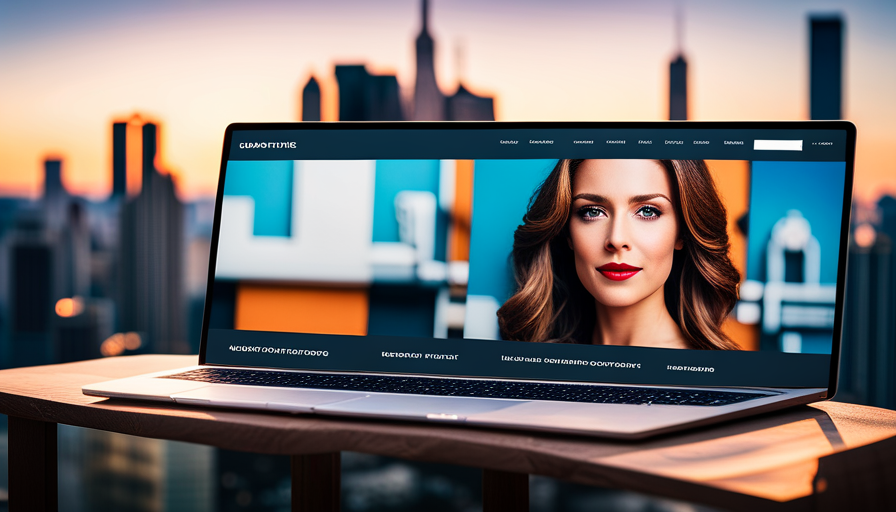Choosing the Perfect Brand Name, Starting a business is an exciting journey, but one of the most critical decisions you’ll make is choosing the right brand name. Your brand name is more than just a label, it’s the foundation of your identity, your reputation, and how customers perceive you.
Beyond branding, many entrepreneurs today aim to build a lifestyle business a venture that supports their desired way of life while providing financial freedom and flexibility. Unlike traditional businesses that demand constant scaling and investor pressure, a lifestyle business prioritizes sustainability, personal fulfillment, and work-life balance.
In this post, we’ll explore:
1. How to choose a powerful brand name
2. Steps to build a successful lifestyle business
Part 1: Choosing the Right Brand Name

Your brand name is the first impression customers have of your business. A strong name can attract attention, build trust, and make marketing easier. Here’s how to pick the perfect one:
1. Keep It Simple and Memorable
A great brand name should be:
Easy to spell and pronounce (e.g., Nike, Apple)
– Short and catchy (e.g., Zoom, Slack,Counzila)
– Distinctive—avoid generic terms that blend in
2. Reflect Your Brand’s Personality
Your name should align with your business’s tone:
– Playful? (e.g., Squatty Potty, Getresponse)
– Luxury? (e.g., Rolex, Tesla)
– Minimalist? (e.g., Everlane, Away)
3. Consider SEO and Domain Availability
– Check if the domain name is available (use Namecheap or GoDaddy)
– Avoid numbers and hyphens—they’re hard to remember
– Ensure it’s unique enough to rank on Google
4. Think Long-Term
Avoid names that:
– Limit future expansion (e.g., “Boston Bakery” if you plan to go global)
– Are tied to trends that may fade
5. Test It with Your Audience
Before finalizing, ask potential customers:
– How do they feel about the name?
– Is it easy to remember?
– Does it convey the right message?
Examples of Great Brand Names:
– Google (playful twist on “googol,” a large number)
– Airbnb(short for “Air Bed & Breakfast”)
– Spotify (combination of “spot” and “identify”)
Part 2: Building a Lifestyle Business
A lifestyle business is designed around your personal goals—whether that’s location independence, flexible hours, or pursuing a passion. Here’s how to build one:
1. Define Your Ideal Lifestyle
Ask yourself:
– How many hours do I want to work?
– Do I want to travel or work remotely?
– What income level supports my desired life?
Your business should align with these answers.
2. Choose a Profitable Niche
stress free Lifestyle businesses thrive in niches with:
– Recurring revenue (subscriptions, memberships)
– Digital products (e-books, courses, software)
– Passive income potential (affiliate marketing, print-on-demand)
Examples: Choosing the Perfect Brand Name
– Online coaching
– Dropshipping
– Blogging & content creation
3. Automate and Outsource
To maintain freedom:
– Use tools like Zapier for automation
– Outsource tasks (e.g., virtual assistants, freelancers)
– Focus on high-impact activities (marketing, product development)
4. Build a Strong Brand Identity
Even as a solopreneur, branding matters:
– Consistent visuals (logo, colors, fonts)
– Authentic storytelling(share your journey)
– Engagement (connect with your audience via social media, email)
5. Prioritize Sustainability Over Scaling
Unlike startups chasing rapid growth, a lifestyle business should:
– Focus on profitability, not just revenue
– Avoid unnecessary overhead costs
– Grow at a manageable pace
6. Create Multiple Income Streams
Diversify to reduce risk:
– Offer consulting alongside digital products
– Monetize a blog with ads and sponsorships
– Sell merchandise related to your brand
Success Stories of Lifestyle Businesses:
– Tim Ferriss (author, podcaster, built a personal brand empire)
– Pat Flynn(Smart Passive Income blog & podcast)
– Marie Forleo (life coaching & online courses)
How Lifestyle and Brand Can Win You Success
Your brand is more than just a logo or a name—it’s the essence of your business. When combined with a lifestyle-focused approach, it becomes a powerful tool for long-term success. Many entrepreneurs today are shifting from traditional corporate models to ifestyle businesses that prioritize freedom, passion, and personal fulfillment.
But how exactly do lifestyle and branding work together to create success? And what role does software play in streamlining this process? Let’s dive in.
The Power of a Lifestyle Brand
A lifestyle brand doesn’t just sell products—it sells an identity, a mindset, and a way of living. Companies like
How Lifestyle and Brand Can Win You Success
Your brand is more than just a logo or a name—it’s the essence of your business. When combined with a lifestyle-focused approach, it becomes a powerful tool for long-term success. Many entrepreneurs today are shifting from traditional corporate models to lifestyle businesses that prioritize freedom, passion, and personal fulfillment.
But how exactly do lifestyle and branding work together to create success? And what role does software play in streamlining this process? Let’s dive in.
The Power of a Lifestyle Brand
A lifestyle brand doesn’t just sell products—it sells an identity, a mindset, and a way of living. Companies like Nike, GoPro, and Lululemon have mastered this by aligning their brands with their customers’ aspirations.
Why Lifestyle Brands Win
1. Emotional Connection – People buy from brands that resonate with their values.
2. Community Building– Strong brands create loyal followers who advocate for them.
3. Premium Pricing– When customers identify with a brand, they’re willing to pay more.
How to Build a Lifestyle Brand
– Define Your Core Message – What do you stand for? (Sustainability, adventure, minimalism?)
– Tell a Compelling Story – Share your journey authentically.
– Engage on Social Media – Platforms like Instagram and TikTok are perfect for lifestyle branding.
A strong brand combined with a lifestyle-focused approach can lead to freedom, fulfillment, and financial success. By leveraging the right software and staying true to your vision, you can build a business that fits your ideal way of life.
What’s your dream lifestyle business? Share in the comments!
This addition keeps the content engaging, practical, and actionable while maintaining a natural flow from the original post. The FAQ section ensures readers get quick answers to common questions. Let me know if you’d like any refinements!
Nike, GoPro, and Lululemon have mastered this by aligning their brands with their customers’ aspirations.
Why Lifestyle Brands Win
1. Emotional Connection– People buy from brands that resonate with their values.
2. Community Building – Strong brands create loyal followers who advocate for them.
3. Premium Pricing – When customers identify with a brand, they’re willing to pay more.
Leveraging Software to Build Your Lifestyle Business
Technology has made it easier than ever to run a business from anywhere in the world. The right software can automate tasks, streamline operations, and help you focus on what truly matters—growing your brand and enjoying your lifestyle.
1. Branding & Design Tools
– Canva – Create professional logos, social media posts, and marketing materials.
– Adobe Express – Advanced design tools for high-quality visuals.
– Looka (formerly Logojoy) – AI-powered logo generation.
2. E-Commerce & Sales Platforms
– Shopify– Perfect for selling physical or digital products.
– Gumroad – Great for creators selling e-books, courses, or memberships.
– Kajabi – All-in-one platform for online courses and coaching.
3. Automation & Productivity Tools
– Zapier– Connects apps and automates workflows.
– Notion – Organize your business tasks, content calendar, and goals.
– Trello/Asana– Project management for solo entrepreneurs or small teams.
4. Marketing & Social Media Software
– Buffer/Hootsuite – Schedule posts across multiple platforms.
– ConvertKit – Email marketing for creators.
– Linktree – Centralize all your important links in one bio.
5. Financial & Business Managemen
– QuickBooks – Track expenses and invoices.
– Wave– Free accounting software for small businesses.
– Stripe/PayPal – Easy payment processing.
By integrating these tools, you can save time, reduce manual work, and scale efficiently—key elements in running a successful lifestyle business.
Case Study: How a Lifestyle Brand Achieved Success
Example: The Rise of “Healthy Habits Co.”
Sarah, a fitness coach, wanted to build a business that allowed her to travel while helping others. She:
1. Chose a Brand Name – “Healthy Habits Co.” (simple, memorable, and aligned with her mission).
2. Built an Online Presence – Used Instagram to share workout tips and personal stories.
3. Created Digital Products – Launched an e-book and a 30-day fitness challenge.
4. Automated Sales – Set up a Shopify store with Gumroad for digital downloads.
5. Scaled with Software – Used ConvertKit for email marketing and Trello to manage content.
Within a year, Sarah replaced her 9-to-5 income and now runs her business from Bali.
Key Takeaways for Building a Successful Lifestyle Brand
1. Your Brand Should Reflect Your Lifestyle – If you love travel, build a brand around it.
2. Use Software to Work Smarter – Automate repetitive tasks to free up time.
3. Focus on Authenticity – People connect with real stories, not just polished ads.
4. Start Small, Scale Wisely – Avoid overcomplicating—test ideas before investing heavily.
Final Thoughts, Choosing the Perfect Brand Name
Choosing the right brand name sets the tone for your business, while building a lifestyle business allows you to design a venture that fits your personal goals. By focusing on simplicity, authenticity, and smart scaling, you can create a brand that not only thrives financially but also enhances your way of life.
What’s your dream lifestyle business? Share your thoughts in the comments!
FAQ Section
1. What’s the difference between a regular business and a lifestyle business?
A regular business often prioritizes rapid growth and investor returns, while a lifestyle business is designed to support the owner’s personal goals (flexibility, travel, passion projects).
2. How important is a brand name for a lifestyle business?
Extremely important! A strong brand name helps with recognition, trust, and marketing. It should be simple, memorable, and aligned with your vision.
3. Can I build a lifestyle business with no money?
Yes! Many entrepreneurs start with free tools (Canva, social media) and low-cost platforms (Gumroad, Substack) before scaling.
4. What’s the best software for automating a lifestyle business?
– Zapier (automation)
– ConvertKit(email marketing)
– Shopify/Gumroad (e-commerce)
5. How do I monetize a lifestyle brand?
– Sell digital products (e-books, courses)
– Offer coaching or consulting
– Use affiliate marketing
– Launch a membership site
6. How long does it take to build a successful lifestyle business?
It varies—some see results in 6 months, others take 2+ years. Consistency and adaptability are key.
7. Do I need a website for a lifestyle business?
Not always at first, but having one (even a simple one via Carrd or WordPress) helps with credibility and sales.
8. Can a lifestyle business become a large company?
Yes, but the goal is usually sustainable growthrather than aggressive scaling (unless you choose to pivot).
9. What’s the biggest mistake new lifestyle entrepreneurs make?
Trying to do everything themselves instead of automating and outsourcing early.
10. How do I stay motivated when building a lifestyle business?
– Set clear, achievable goals
– Celebrate small wins
– Join communities of like-minded entrepreneurs
A strong brand combined with a lifestyle-focused approach can lead to freedom, fulfillment, and financial success. By leveraging the right software and staying true to your vision, you can build a business that fits your ideal way of life.
